Text

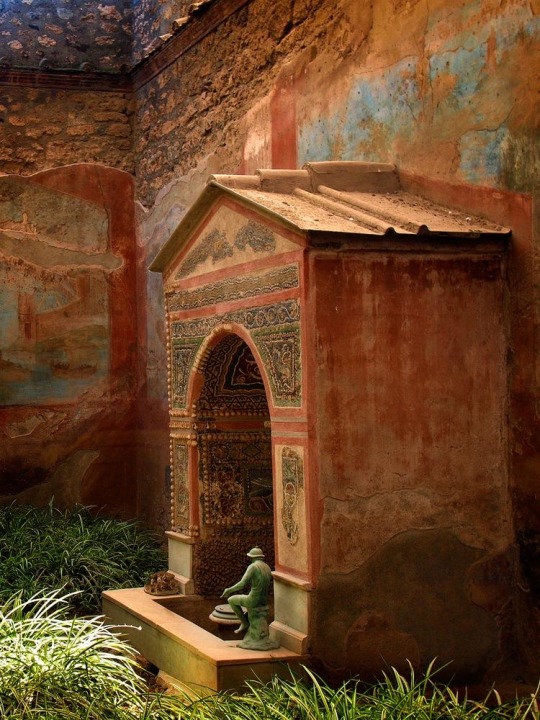

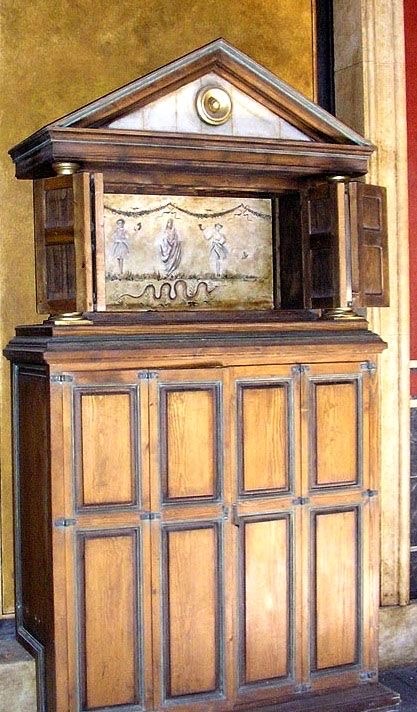




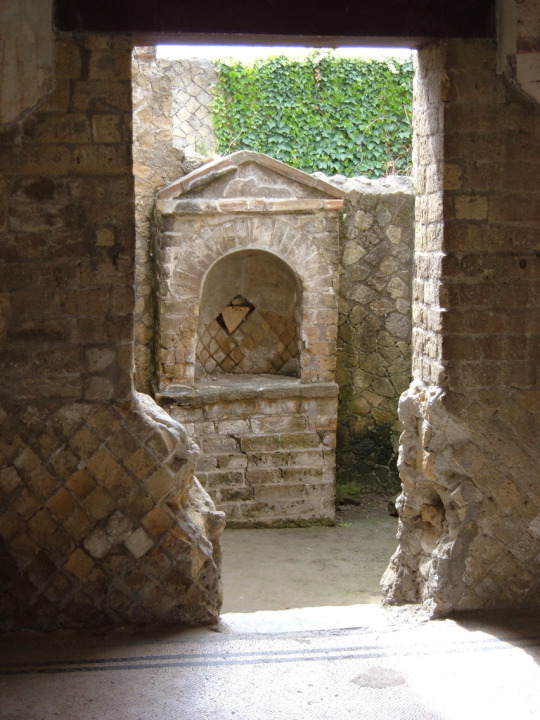

The "lararium" in ancient Rome was a small domestic sanctuary in which offerings and prayers were made to the lares, the protective spirits of deceased ancestors, who watched over the proper functioning of the family and home. It could be located in different spaces of the houses, for example in the atrium (main courtyard of well-to-do Roman dwellings); in the most humble, which did not have it, it could often be placed in the kitchen, near the central fire. There could be more than one larario in the house. Each family worshiped their tutelary gods with offerings and daily rituals. If they were not carried out, they believed that they were exposed to various misfortunes. Family relics were also kept in the larario. The offerings were varied, but mainly flowers to decorate it, wine, incense, cereals, honey, perfumes, fruits, cakes or animal sacrifices. The master of the house dedicates a prayer: "May this home be for us a source of goods, a blessing of happiness and good luck." (Plautus)
3K notes
·
View notes
Text
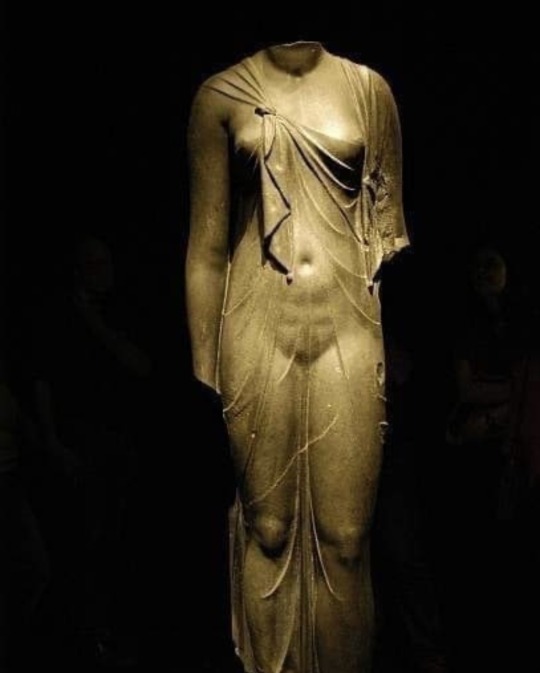
Statue of Queen Arsinoe II identified as the goddess Isis. Ptolemaic Period (305-330 BC)
Museum of Antiquities Alejandrina Library
486 notes
·
View notes
Text

Gold and enamel earrings, Greek, 4th-2nd century BC
from Timeline Auctions
1K notes
·
View notes
Photo

Egyptian Faience collar Necklace. Late Period 664-332 BC
899 notes
·
View notes
Text
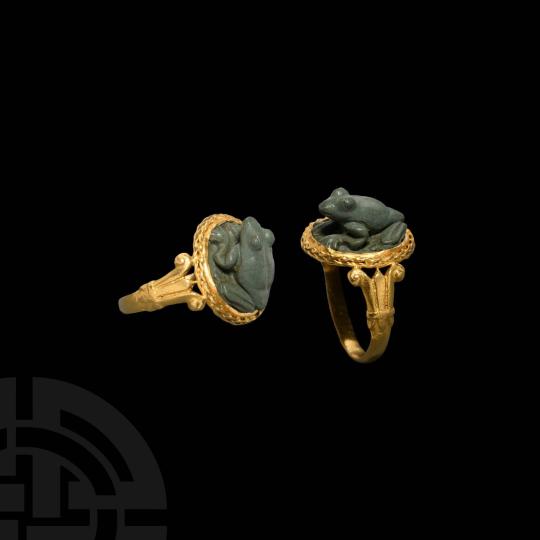
Gold ring with jasper frog, Egypt, 600-30 BC
from Timeline Auctions
9K notes
·
View notes
Text

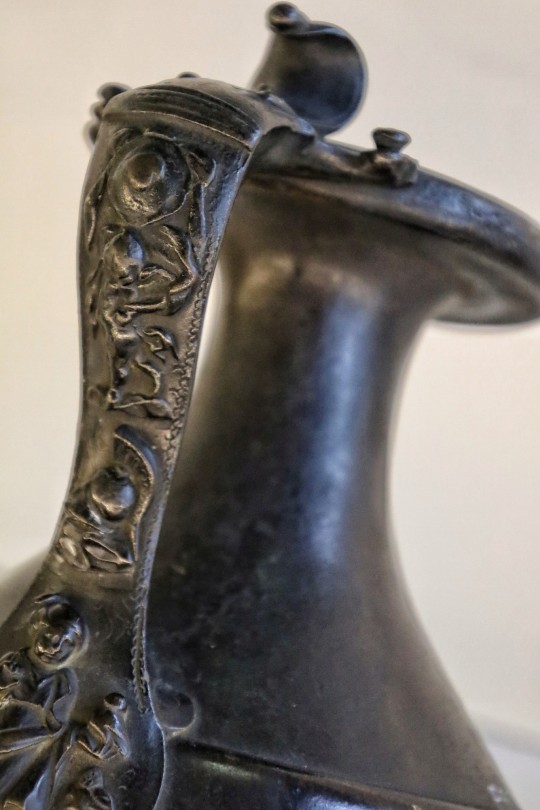

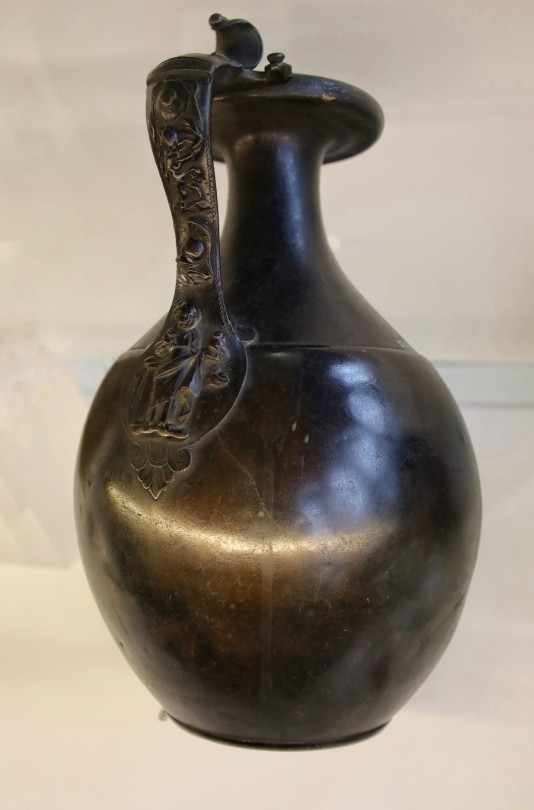
Bronze Roman Dining Jug (2nd Century CE) thrown into a Glasgow River as a Celtic votive offering, The Hunterian Museum, Glasgow, Scotland
300 notes
·
View notes
Text
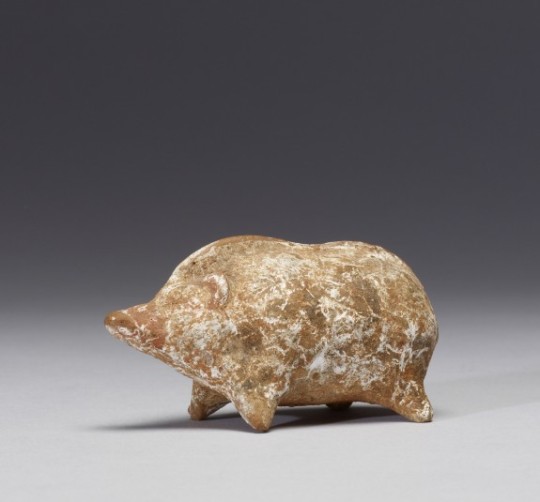
This pig statuette was produced in Boeotia, a region of ancient Greece known for its prolific output of terracotta figurines. The pig was a common sacrificial offering, and figurines may have served as votive offerings in place of live sacrifices. Examples of pig-shaped children's toys and sippy cups are also known.
5th century BCE (Archaic)
The Walters Art Museum
1K notes
·
View notes
Text

Earrings with cow heads
Greek, 5th century BCE (Late Archaic-Classical)
The Walters Art Museum
2K notes
·
View notes
Text

This depiction of a young man with abundant curly hair combines features of both Egyptian and Greek sculpture of the Hellenistic Period (331-30 BCE). Egyptian elements include the use of the hard, dark stone, the precision with which the eyes have been carved, and the use of contrasting surfaces, with the highly polished face set off by the unpolished curls. The delicate modeling of the cheeks, slightly parted lips, and hairstyle are characteristic of Greek naturalism. The complete statue probably represented the owner striding and wearing a short Egyptian kilt.
2nd century BCE-early 1st century CE (Ptolemaic-Roman)
The Walters Art Museum
360 notes
·
View notes
Text

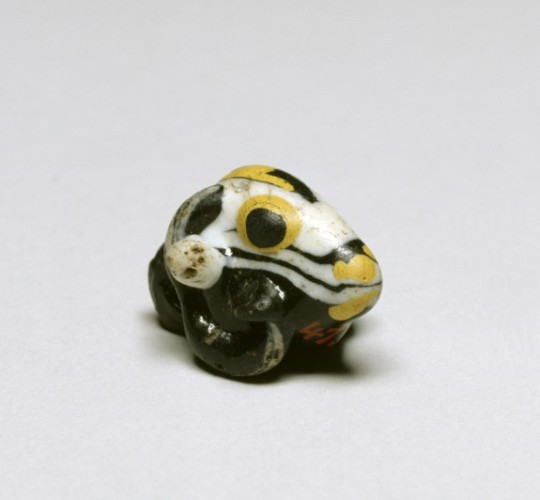
Pendants in the shape of rams' heads
Punic, 5th-4th century BCE
Miniature glass pendants in a large variety of colors and shapes can be found all over the Mediterranean world and were probably produced in several glassmaking centers, including Carthage, Iran, and Syria. These objects were distributed through the expansive, widespread trade routes established by the Phoenicians. Rams were considered fertility symbols, and this pendant likely also had a protective function and was intended to ward off evil.
The Walters Art Museum
649 notes
·
View notes
Text

Pendant Necklace
Greek, discovered in modern day Ukraine
late 2nd century BCE (Hellenistic)
The Walters Art Museum
421 notes
·
View notes
Text

Gold thigh band, Greek, late 4th century
from Sotheby's
2K notes
·
View notes
Photo
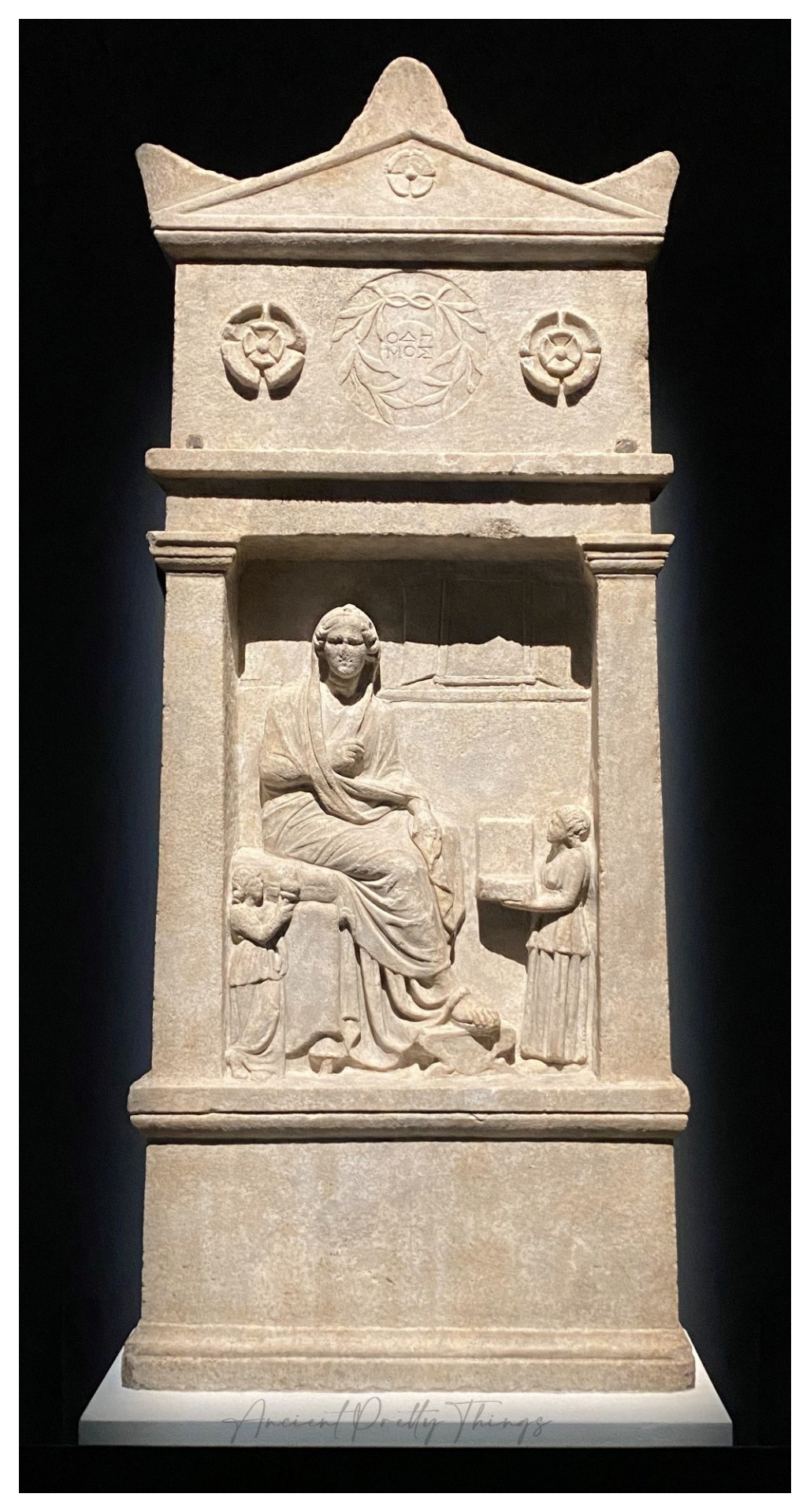

Gravestone of a woman named Phila.
She was clearly a member of the affluent upper classes, as indicated by the scale of the setting in which she sits; the elaborate clothing she wears; and the small scale of her servants/slaves.
The wreath at the top of the gravestone indicates that she was a generous benefactor during her lifetime.
Manufactured circa 150 BCE in Smyrna, modern Turkey.
161 notes
·
View notes
Text
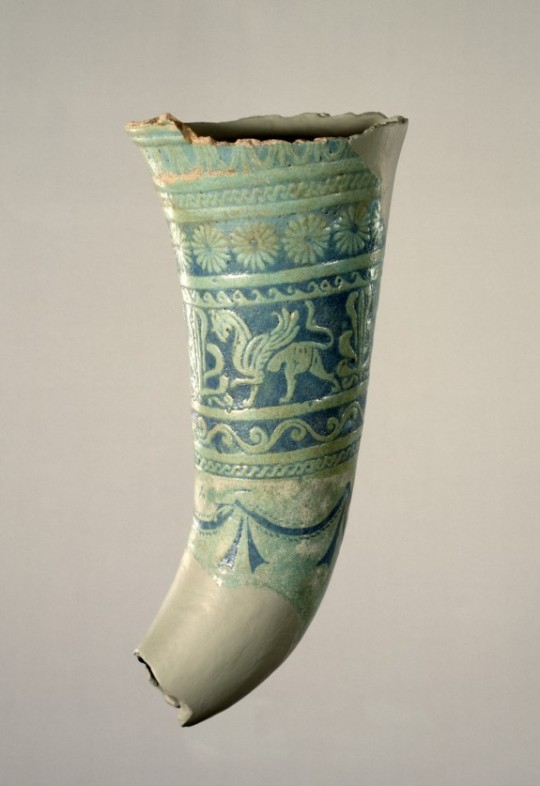

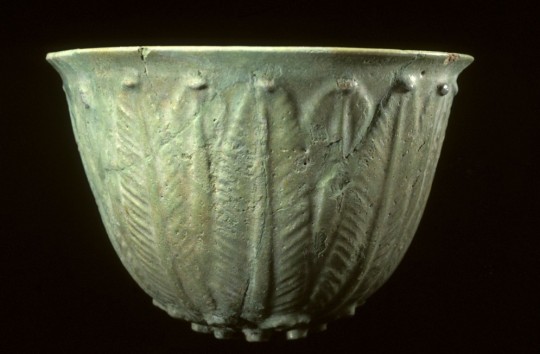
During the 26th Dynasty, the Greeks established merchant colonies in Egypt. Faience workshops in these towns produced goods for the local population, as well as products in an Egyptian style for export.
1. Rhyton with griffins
2. Flask with running figures and lotus
3. Lotus bowl
3rd-2nd century BCE (Ptolemaic)
The Walters Art Museum
191 notes
·
View notes
Text
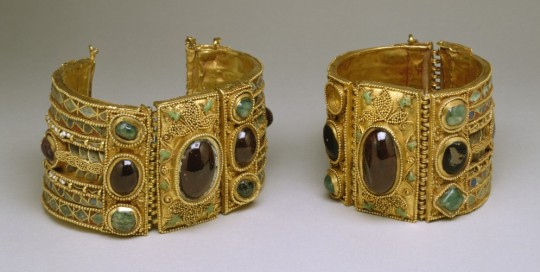
This outstanding example of jewelry from the 1st-century BCE Greek colonies in the Black Sea region is purported to belong to the famed Olbia treasure, named for the town in present-day Ukraine in which it was discovered at the end of the 19th century. Using multiple colors and sizes of gemstones became common in Greek jewelry making after the conquest of the East by Alexander the Great (356-323 BCE), which opened up new trade routes and introduced the Greeks to Oriental styles.
The Walters Art Museum
217 notes
·
View notes
Text
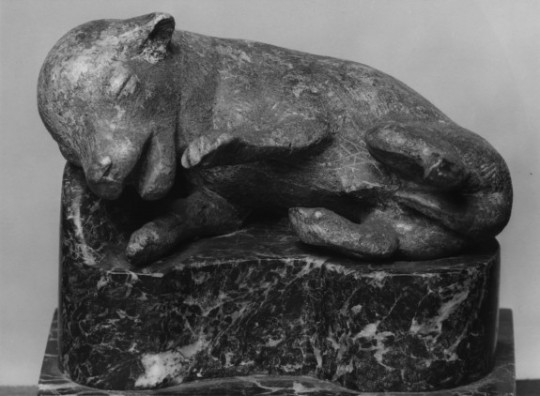
Bronze newborn puppy
332-30 BC
Of Greek or Roman craftsmanship, discovered in Rome
The Walters Art Museum
19K notes
·
View notes
